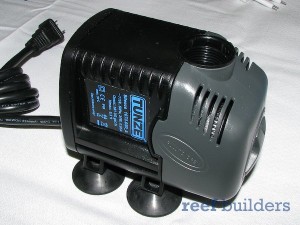
PRESS RELEASE (JANUARY 2011)
For Immediate Release
AQUARAMA KICKS OFF 2011 WITH HUGE OPTIMISM
The Aquarama 2011 train marches on relentlessly, with new exhibitors and official supporters joining the already-impressive list of participants lined up for this unique biennial event in the international ornamental aquatic calendar.
Confirming its total confidence in Aquarama, the Taiwan Ornamental Fish Association (TOFA), for example, has reserved a 252 sqm booth for this year, a huge increase in the floor space it took up in 2009. Visitors to Aquarama 2011 will therefore enjoy an even wider range of Taiwanese products and services than at previous editions.
The Thai government’s Department of Fisheries has also confirmed its participation, following its successful experiences at previous Aquarama. Alongside this always popular and attractive display highlighting Thailand’s diverse aquatic offerings, are new exhibitors from China, Taiwan, Japan, Malaysia and France – the latest to join the continuously expanding catalogue of exhibitors.
Aquarama also has a new media partner: Asian Aquaculture Network (AAN) which has undertaken to promote the event. AAN was established in 2009 with the primary aim of promoting sustainable development and practices in Asian aquaculture. The promotion will happen, both via the AAN website (www.asianaquaculturenetwork.com), as well as the organisation’s trade publication, The Practical, which has become an official Aquarama supporting publication, as are: Pet Market, Pets International, AquaPets, AquaZoo News, Fish Magazine, PET Worldwide, Pet Industry News and FISH Magazine.
Turning to the Aquarama high-status Trade Seminar Programme, the list of top international speakers is now virtually complete, with participants (so far) coming from Singapore, Austria, Belgium, Netherlands, Norway, Germany, Denmark, the Czech Republic, UK, USA, Australia, India, Thailand and Mexico. The main seminar theme, Managing Change – Maintaining Focus, is divided into three sessions: International Perspectives, Maintaining Quality and – Trends and Trade. Entrance to this gathering of international experts, which will be held during the first two days of the show, is absolutely free.
The Public Seminar Programme (entry to which is absolutely free) is also close to being finalised and is equally impressive, with the following topics already decided: discus, seahorses, aquatic plants, dragon fish, cichlids, crystal bee shrimps, aquarium maintenance and nano aquaria. These seminars – to be addressed by an international panel of speakers – will be held during the last two days of the event when the show will open its doors to the general public.
And…speaking of nano aquaria, Aquarama 2011 sees the launch of a brand new competition featuring these currently ‘hot’ mini-systems. In this initial phase, the Nano Tank Competition will be restricted to freshwater set-ups which will be judged, not just on appearance, but also on the appropriateness of the décor, plants and tank inhabitants. It is worth mentioning that this new competition is an addition to the already-existing competitions and not a replacement for any of these. Therefore, the Marine Tank Competition, Planted Tank Competition and International Fish Competition – with their usual, attractive cash prizes, trophies and kudos – will still be there and, if current indications are anything to go by, will be, at least, every bit as spectacular and worthy of being staged at Aquarama as all their predecessors.
There are several other, completely new, competitive elements lined up, too. The Fish Photography Competition will be dedicated to photographs taken onsite during Aquarama. The Fish Drawing Competition for children will, likewise, need to feature any one, or group, of fish exhibited during the event, while, in the Fish Counting Competition participants will have to estimate how many fish there are in a tank specifically set up with numerous small, fast-swimming, shoaling fish to test participants’ powers of concentration, estimation and patience!
Full details of all these features, plus everything else relating to Aquarama 2011 (Suntec Singapore, 26-29 May, 2011) can be found on the event’s website (www.aquarama.com.sg) or by contacting: Mr. Wein Ng, Project Manager (Wein.Ng@ubm.com).
UBM ASIA TRADE FAIRS PTE LTD
No. 3 Pickering Street, #02-48
China Square Central
Singapore 048660
Tel: +65 6592 0889
Fax: +65 6438 6090
Note: Aquarama 2011 will be held on 26 – 29 May 2011 at Suntec Singapore
Share on digg










